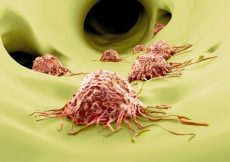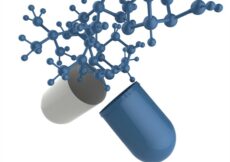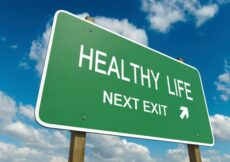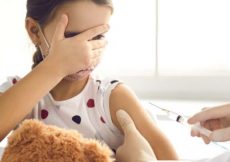June 29th, 2022
It’s summer and that means it’s hot! While heat waves have been experienced by every prior generation of human beings, extreme heat events are becoming more numerous and widespread for Earth’s current inhabitants.
We know that increasing concentrations of greenhouse gases in the atmosphere, mostly carbon dioxide and methane, are driving rising temperatures and causing more frequent and more severe heat waves that are lasting longer than they used to. Exposure to elevated temperatures leads to poor health outcomes, including heat-related illnesses and death which will increase as the climate crisis intensifies.
The people who suffer the most from extreme heat are the same ones who bear the highest burden from fossil-fueled air pollution, infectious diseases, food insecurity, water scarcity, and other consequences of climate change which adversely affect physical and mental health:
• Pregnant women and their developing fetuses;
• Infants and children;
• The elderly;
• People living in poverty who may not have access to safe housing, clean water, nutritious food, and health care services;
• Black, Indigenous, non-white people and communities;
• Heat puts a strain on people living with acute and chronic medical conditions, such as lung ailments, heart disease, metabolic problems like diabetes, kidney disease, cancer, and mental illness;
• City dwellers often live within “urban heat islands” where heat becomes concentrated, without breezy green spaces that help dissipate heat more easily;
• Laborers and first responders who spend most of their day working outdoors.
Children are especially vulnerable to summer heat and get sick from the heat easier than adults. Active kids and student athletes, especially football players, are at risk. Low baseline fitness levels, dehydration, and fatigue increase the likelihood athletes will suffer in the summer heat. Having to wear dark, non-reflective uniforms and heavy equipment while participating in long and intense activities raises the risk as well. Adequate periods of rest, ample drinking water, and shade help reduce the risk on hot summer days.
It’s important for students, parents, and coaches to be able to recognize when someone is feeling the effects from heat. Our colleagues with Virginia Clinicians for Climate Action break down the symptoms associated with excess heat exposure into four categories:
Heat Cramps: Muscles begin to spasm, usually starting in the legs.
Dehydration: Heat cramps PLUS increased thirst and dry mouth; headache and fatigue; urine output is reduced and becomes darker.
Heat Exhaustion: Heat cramps and dehydration PLUS heavy perspiration, dizziness, nausea and vomiting.
Heat Stroke: Heat exhaustion PLUS high heart rate and breathing rate; high body temperature and hot skin; confusion, loss of consciousness, seizures, and potentially death.
Heat illness must be treated quickly in order to prevent symptoms from worsening and and possibly leading to tragic outcomes:
• Remove extra clothing and equipment.
• Quickly find a shaded area or air-conditioned room.
• Cool the body with cold, wet cloths or ice.
• Rehydrate with cold water or sports drinks. Intravenous fluids will be needed from first responders if vomiting ensues.
• Raise legs above the heart to support circulation.
• Call 911 if symptoms continue or worsen
Remember that children and teenagers need time to recover and be free from heat-related symptoms before being allowed to return to action.
The American Academy of Pediatrics says parents can beat the heat and protect children from heat-related illnesses and hazards:
• Stay hydrated: Encourage your children to drink water frequently and have it readily available—even before they ask for it. Take water bottles with you if you go out. On hot days, infants receiving breast milk in a bottle can be given additional breast milk in a bottle, but they should not be given water, especially in the first 6 months of life. Infants receiving formula can be given additional formula in a bottle.
• Dress lightly: Dress your children in clothing that is light-colored, lightweight, and limited to one layer of absorbent material that will maximize the evaporation of sweat. Kids have a lower capacity for sweating than adults. Be sure to use plenty of sunscreen.
• Plan for extra rest time: Heat can often make children (and their parents) feel tired. High heat can not only cause people to feel tired, but it may also contribute to irritability. Come inside regularly to cool off, rest, and drink water.
• Keep your cool: When your child is feeling hot, give him or her a cool bath or water mist to cool down. Swimming is another great way to cool off while staying active. Remember that children should always be supervised while swimming or playing in water to prevent drowning.
• Never leave your child in a car: The inside of a car can become dangerously hot in just a short amount of time, even with the windows open.
Coaches can make hot weather practices and games safer by scheduling them earlier or later when the air cools and the sun is lower in the sky and less intense. Providing shade and frequent breaks in the action are advisable. Clean drinking water should be available, plentiful and freely accessible to everyone on the field. First responders should be present or close by during practices and games in case student athletes develop symptoms of heat illness.
It’s important for adults and children to carefully plan their outdoor activities when days get hot. Remember that outdoor air quality typically worsens on hot days and stays that way for the duration of heat waves — defined by The World Meteorological Organization as “a period of abnormally and uncomfortably hot and usually humid weather … when the daily maximum temperature for more than five consecutive days exceeds the average maximum temperature by 9 degrees Fahrenheit” — so parents and children may be advised to stay indoors anyway when ground-level ozone and airborne particulate matter are at unsafe levels.
Read VCCA’s infographic, “Keep It Cool, Kids” here and “Excessive Heat: Keeping Kids Safe When Temperatures Soar” from the AAP here.




































